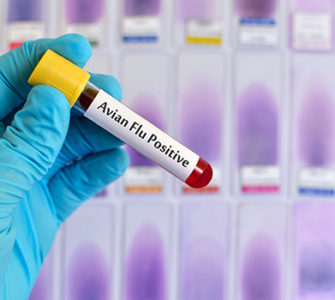Yeast protein could help tackle China’s Avian ‘Flu problem’
A protein found in yeast could help scientists in China tackle avian influenza in poultry flocks.
Researchers have been given the go-ahead to use recombinant chicken alpha interferon, a naturally occurring protein that stimulates birds’ immune systems, reports Poultry World.
Vaccines are currently used to stop infections, but they don’t necessarily stop serious outbreaks due to the variability of avian flu strains.
Now scientists at the Institute of Microbiology of the Chinese Academy of Sciences, working in collaboration with other industry bodies, have been given approval to use chicken alpha interferon to tackle the disease.
Interferon plays an important role in the early stages of infection by improving immune function and encouraging the body to produce a variety of anti-viral proteins.
The chicken alpha interferon gene was introduced into Escherichia coli to produce recombinant chicken alpha-interferon protein. The protein was then purified and added to poultry drinking water.
According to the Chinese Academy of Sciences, test results found that poultry receiving the recombinant chicken alpha-interferon protein were protected against the H9 subtype of avian flu, suggesting that the protein retained its activity inside the birds.
The product does not cause resistance, and unlike vaccines, which can mask AI, has few side effects. It is also fast-acting, making it a potentially useful addition to the long-term management of the disease.
Posted on March 5, 2018

















